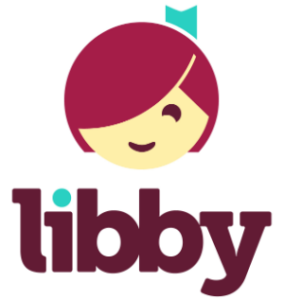
Public Library Collection Development Secrets, Revealed
This post about library collection development is sponsored by Rakuten OverDrive.

If you’re a librarian, then you already know all of this. If you’re not, then welcome to the arcane mysteries of public library collection development! I’m here to tell you that librarians use neither ouija boards nor turtle shells to choose books for their collections. Read on if you want to know how exactly what goes into the perfect public library collection.
The Inherent Problem In Public Library Collection Development
Central to public library collection development is philosophy. When Melvil Dewey first declared himself Library King, he decreed that libraries existed to “better” the populace. By this, he meant “subdue” the populace with religious material that reified the social position of the lower classes.
Despite Dewey’s revered status at the time, librarians pretty much ignored this idea and stocked a bunch of racy thrillers and rags-to-riches tales in their new public libraries instead. Hey, give the people what they want, right?
Today, the debate over quality and popularity rages on. You may have heard about the children’s librarian who nearly killed Goodnight Moon because she and she alone decided that it wasn’t a good children’s book based on her personal tastes. You may also have found Ann Coulter’s idiotic screeds shelved in Nonfiction at your local public library. Modern librarians usually try to keep their personal political and ideological beliefs out of public library collection development, striving to provide books for every possible reader.
Why This Is A Problem
There are some points where this practice becomes problematic. Consider the library that must choose whether to stock a bestselling book by a pickup artist. It’s repulsive, but there is demand, and it’s the only book of its type in the collection. Most reasonable people, given a librarian’s power, would probably smirk and consign that option to the flames—but wait. What happens when the liberal, feminist collection developer retires, having successfully kept their library free of pickup artists for their entire career? Their successor, a raging homophobe, might well refuse to buy teen books about LGBTQ people using the same justification as their predecessor used when they refused to stock books about pickup artists. The message isn’t appropriate, the replacement librarian would say. Any reasonable person would see that. I’m just using my good judgment like the last person did.
See the problem? It’s not a matter of what you stock, but how you stock it. Libraries are a long game. Setting a precedent of developing a collection along the lines of your personal beliefs is guaranteeing trouble down the line.
Books of “Quality”
An extension of this problem is the “book of quality.” Dewey would have defined this as a book based on the Bible. Today, we might count a “quality” book by its status as a classic.
There’s obviously a question of what counts as a classic anymore. Heart of Darkness used to be a literary standard, but it’s fallen out of favor due to its stunning racism and the fact that fewer high school teachers are assigning it. (Because, y’know, it’s stunningly racist.)
So if Heart of Darkness hasn’t gone out for three years, does the library weed it out? What about Moby Dick or Mrs. Dalloway? Here’s a data point for you: in more than a few places, public libraries still get funding based partially or totally on their book circulation statistics. Stocking classics makes sense for academic libraries, but publics generally benefit more from stocking the most popular works. There’s no reward for maintaining an entire collection of “classics.”
Add that to the fact that space in a public library is limited. It’s no small deal to build more book rooms, and it’s fair to say that the average local library would be swamped with classics of dubious utility if they tried to stock every Pulitzer-winner out there. A collection has to turn over regularly or it will become a mausoleum.
Classics Are Old
Moreover, plenty of those “classics” are just old. Back in the day, plenty of stodgy white men had stodgy things to say about everyone else, and they wrote lots of books about their opinions. Many of these are now barely relevant except in a historical context. Worse, most of them approach the world from a white, male, heteronormative perspective. That’s just not the American public. A collection of classics is a collection that generally can’t relate to the people the library is supposed to serve. Sometimes, it’s better to let Henry James and Edith Wharton naturally wear out and replace them with Sandra Cisneros and Colson Whitehead. It’s a matter of knowing your readers.
The last group of people who are still reading classics is students, and that’s the most compelling reason to curate some classics. Schools often send students to public libraries to borrow reading material, so public librarians may coordinate with teachers or school librarians to determine what classics to stock in bulk. When it comes to classics, demand is a better way to conduct public library collection development than a potentially biased assessment of the book’s relative importance. That means that classics that are less likely to appear on school reading lists will disappear first. Don’t be shocked if your local public library doesn’t stock The Decameron, The Ambassadors, or Bartleby the Scrivener.
When “Quality” Becomes Quality
The question of quality is still critical, however. I used to review for Foreword Reviews, and there I discovered many a self-published gem. I also discovered many a self-published dud. In many cases, books hadn’t even been spellchecked, much less proofread. It was critical in these cases that librarians did not buy these books. Obviously, there are mainstream books like this, too. Think of it this way: if that book about the pickup artist is uniformly disgusting to everyone in your community, then it won’t circulate and it doesn’t make sense for the library to buy it. Not only is it an unnecessary expenditure, but it occupies a spot that would be better used on a book that actually goes out.
But there are just way too many books for librarians to read these days, especially when you factor in all the self-published work out there. Not that we don’t try; librarians get access to lots—and I do mean lots—of advance reader copies. Even so, there aren’t enough hours in the day. Enter the industry magazine.
Industry mags include Booklist, Publishers Weekly, Library Journal, Foreword Reviews, and many, many more. They specialize in succinct reviews of new and potentially popular upcoming books. Librarians use them to decide what to buy.
Usually, librarians today collect along policy guidelines or get assigned to certain areas of the collection. They may have specific expertise or know the usage statistics for their library’s current collection well enough that they can guess what people will want to read. However, the starred reviews in industry mags have a disproportionate say in what the modern public library collection looks like.
Donating For The Sake Of Public Library Collection Development
Finally, some sweet, beautiful souls will try to donate their old books to the library to help them fill out the shelves. (And, some conniving, devious souls will donate their own publications to the library to try and get some free marketing.) Libraries receive these donations with gratitude, but accepting them into the collection is another story. They still have to conform to the institution’s public library collection development guidelines—after all, the donated book doesn’t come with an equivalent donation of shelf and floor space.
In my humble experience, most book donations go to the library’s book sale, which is still a noble reason to give your old books to the library. Sale proceeds often help fund programs, supplies, or even the book budget itself. In a way, you’re still helping to stock the library. Just leave the collection development up to librarians.
Want to make a personal book collection? Here’s your guide! In case you’re not familiar, here’s a look at the life cycle of a library book.

















